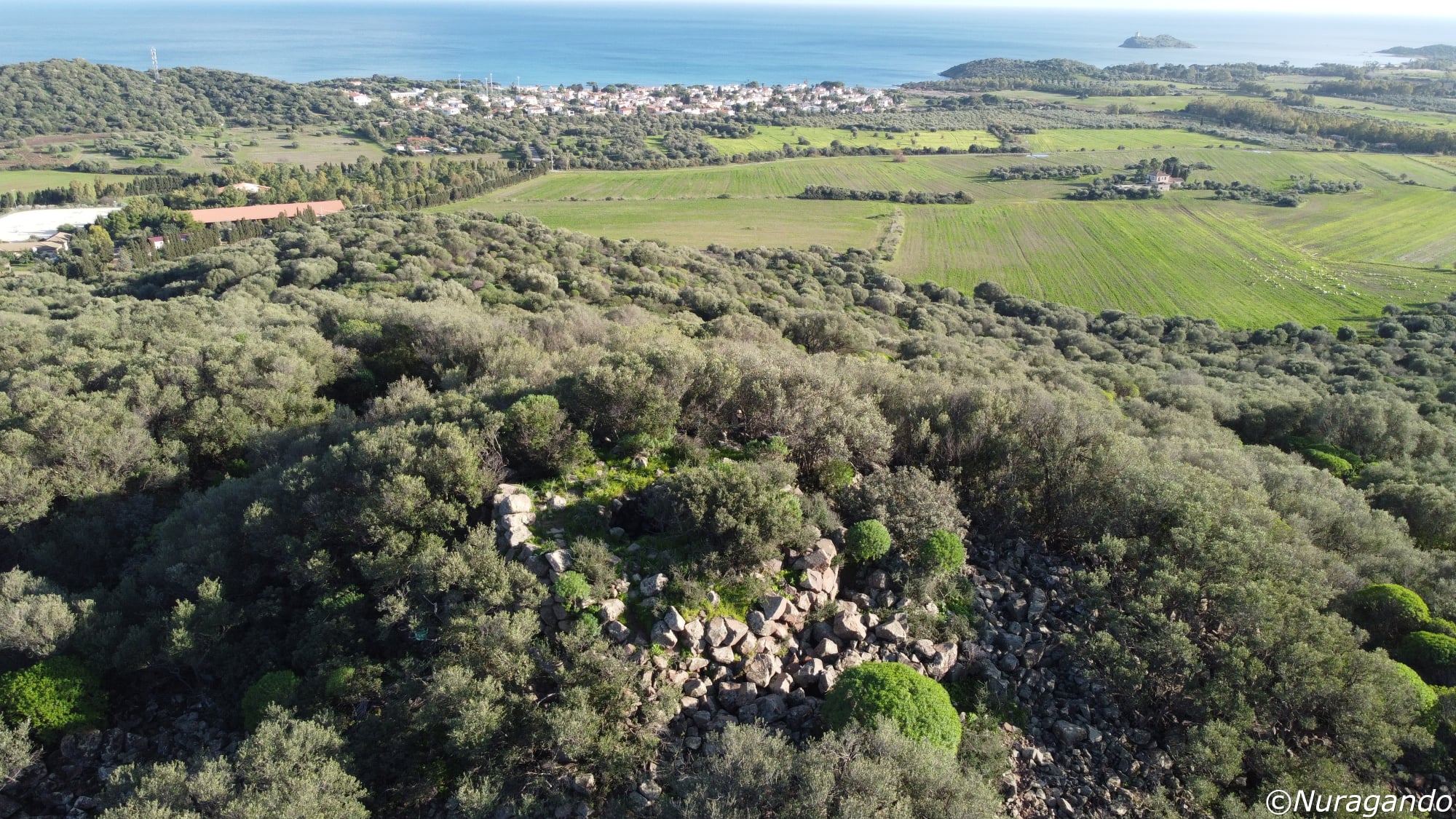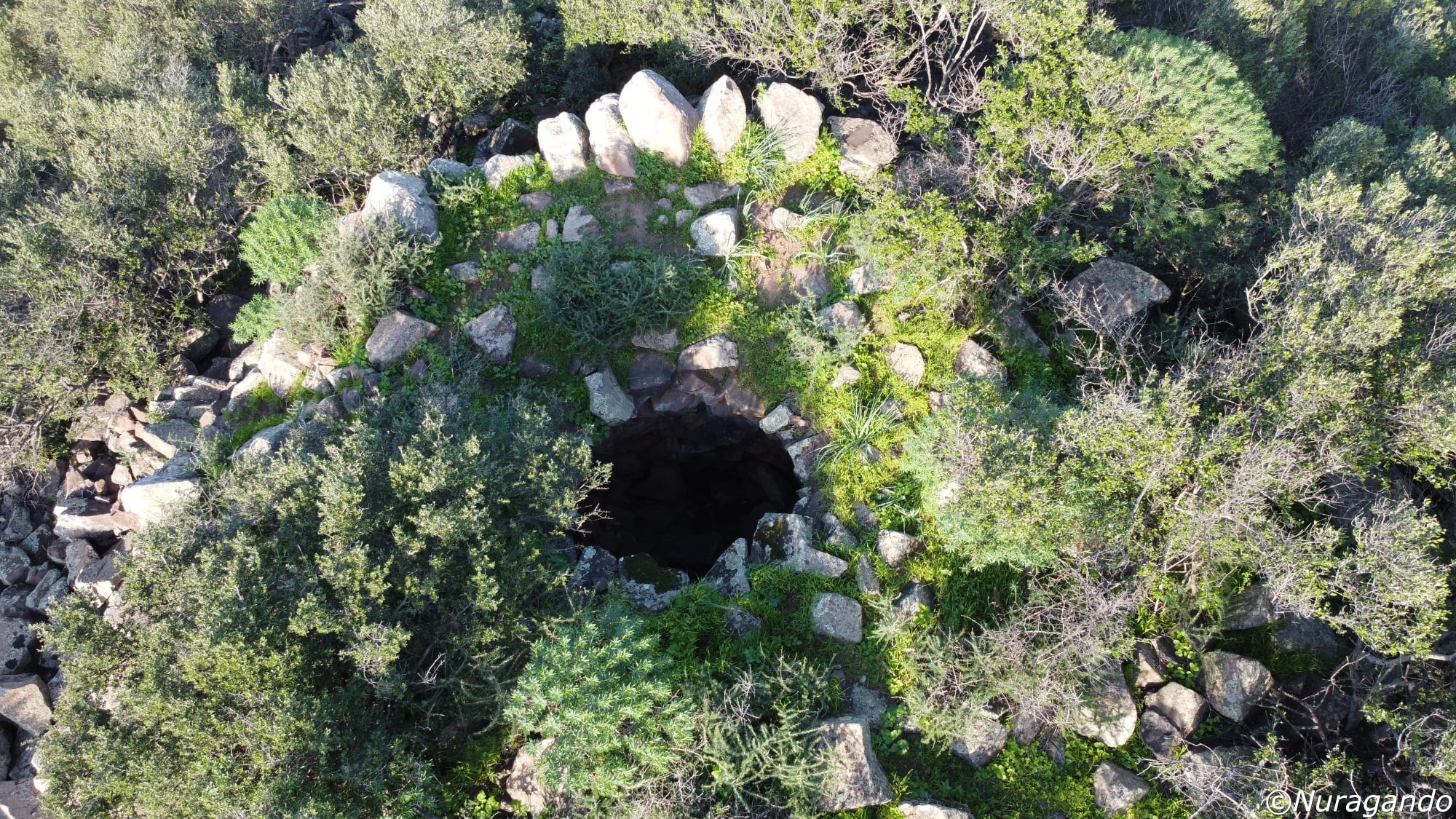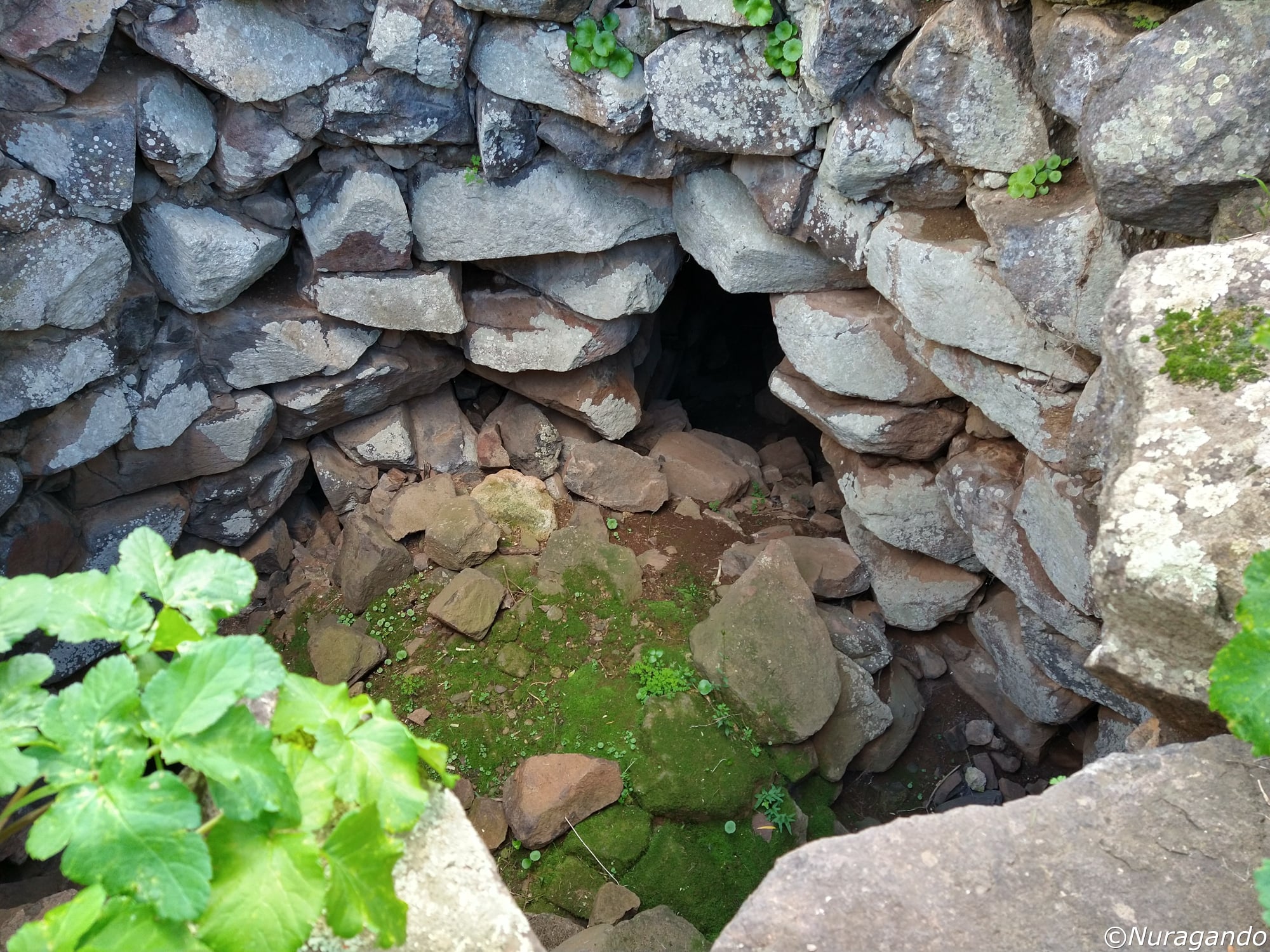109.2 and 110 b.2: The nuraghe Antigori, near which are the remains of three giant tombs, “is located on the hill of the same name, east of Sarroch, in a strategically dominant position towards the mountains of Capoterra and the Gulf of Cagliari, not far from the nuraghe di Sa Domu and S’Orcu. The complex consists of a fortification of circular towers and straight curtain walls that enclose, incorporating the outcrops of natural rock, the summit of the hill where there was a settlement and perhaps also a nuraghe… Today, only two building bodies of the entire complex can be visited. The first, tower C, has a circular plan and preserves the “tholos” chamber with a chamber staircase. The second, the so-called room A, is located against the N curtain. In room A, which has a rectangular plan (m 3.20 x 2.20) and an entrance facing E, the E and O walls are made of living rock, while the N and S walls are constructed with medium-sized blocks arranged in rows. The stratigraphic excavations by Maria Luisa Ferrarese Ceruti, especially those of room A, have yielded numerous Mycenaean ceramics in association with Nuragic ones, attesting to the relations between the two civilizations.
The hill on which the nuraghe Mereu stands, also in the territory of Sarroch and also close to the namesake giant tomb, is not easily accessible to visitors because it is enveloped by Mediterranean scrub. The car must be left about a hundred meters from the asphalt of the coastal road from Sarroch to Pula. From here, one must walk to the nuraghe. It is difficult to even discern the number of towers that surrounded the central one. However, it is certain that it was a polylobed structure with access to the Southeast, whose “mastio” had the three typical internal niches.
The photos of the nuraghe Antigori are by Andrea Mura-Nuragando Sardegna, Bibi Pinna, Marco Cocco, Nuraviganne, and Alberto Valdès (who is also credited with the photo of one of the namesake giant tombs). The photos of the nuraghe Mereu are by Andrea Mura-Nuragando Sardegna.















